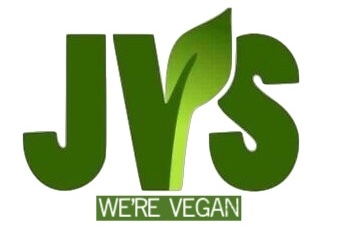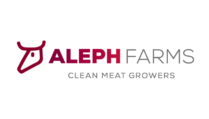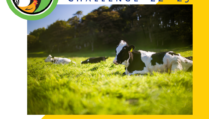One of the best ways of tackling climate change and feeding the growing world population is also one of the simplest.
Written by Simon Fairlie for the Guardian.
Aday would come, Percy Shelley predicted in 1813, when “the monopolising eater of animal flesh would no longer destroy his constitution by eating an acre at a meal”. He explained: “The quantity of nutritious vegetable matter consumed in fattening the carcass of an ox would afford 10 times the sustenance if gathered immediately from the bosom of the earth.”
Two hundred years later, mainstream agronomists and dietitians have caught up with the poet. A growing scientific consensus agrees that feeding cereals and beans to animals is an inefficient and extravagant way to produce human food, that there is a limited amount of grazing land, that the world will be hard-pressed to supply a predicted population of 9 billion people with a diet as rich in meat as the industrialised world currently enjoys, and that it’s not a very healthy diet anyway. On top of this, livestock contribute significantly towards global warming, generating 14.5% of all manmade greenhouse gas emissions, according to one much-quoted estimate from the United Nations.
Now that the problem has been identified, the challenge is to persuade people in wealthy countries to eat less meat. That might seem a tall order, but governments have successfully persuaded people to quit smoking through a combination of public information, regulation and taxation.
So far there has been nothing of this kind from the UK government regarding meat, but information campaigns and initiatives from voluntary organisations ranging from Greenpeace to Paul and Linda McCartney’s Meat Free Monday have succeeded in convincing some people to review their meat consumption. So it can be done. In Monkton Wyld Court, the community-run guesthouse in Dorset where I live, the main kitchen is entirely vegetarian, with a separate kitchen in the garden for special occasions.
A growing chorus of voices is now calling for governments to intervene. In November 2015, the Chatham House thinktank published a report proposing that measures such as taxation should be introduced, along with an information campaign. A year later, a team from the Oxford Martin Future of Food Programme at Oxford University totted up the climate benefits from taxing meat, as well as the number of lives that would be saved if people turned to diets with a greater proportion of fruit and vegetables.
Meat taxes have been proposed for other countries including Denmark and Sweden, and in May 2016 the UN’s International Resource Panel called for taxation on meat to discourage emerging economies from emulating North American and European diets.
As yet, no country has taken the leap, and there are questions over what kind of taxation might work best. Ironically, the ideal solution might be not to tax meat itself, but to tax fossil fuels. If fossil fuel consumption were reduced to levels necessary to keep the global temperature rise under 2C, then meat production would decline as a consequence – partly because nitrogen fertilisers and other inputs used for growing animal feed would become more expensive, and partly because there would be increased competition for grazing land, from energy crops such as timber and elephant grass. Since the extraction of fossil fuels releases about the same volume of methane into the atmosphere as livestock, it is likely that methane levels in the atmosphere would soon stabilise.
Unfortunately there isn’t much prospect of the global community agreeing to limit fossil fuels to the necessary level in the near future. Which brings us back to meat taxes, most proposals for which foresee different rates of tax applied to different animals. The problem with this approach is that scientists do not agree which species are more harmful: it depends how much weight you apply to different factors, such as methane emissions, nitrogen and phosphate pollution, effects on biodiversity, and the amount of carbon stored in the soil. Thus the Oxford Martin team recommends a 40% tax on beef and an 8.5% tax on chicken, whereas Swedish analyst Sarah Säll calls for a 40% tax on chicken and 28% on beef.
In fact there may be greater differences between different management systems than between different species. For example, a pig fed on food waste and crop residues has a tiny fraction of the environmental impact of a pig fed on soya and grains. Beef from the progeny of dairy cows – being a byproduct of the milk industry – has lower carbon emissions than beef from pure-bred herds. An animal grazed on permanent pasture will be maintaining soil fertility and biodiversity, and storing carbon in the soil, while an animal fattened in a feed lot will be doing the reverse.
If we were to have a meat tax, it would therefore be simpler to have a flat rate for all meat; and in the UK and the rest of the EU there is an oven-ready way of doing that which also brings other potential benefits.
Imposing standard rate VAT (value-added tax, also known as GST in some parts of the world) of 20% on all meat products would be a simple matter, since the means of collecting it is already in place. It is also probably less likely to be resisted than a dedicated meat tax, since consumers are used to paying VAT on luxury food items such as ice-cream, confectionery, biscuits, shelled nuts and fruit juice. It is hard to think of a more seamless way of introducing consumers to the concept that meat, whatever its provenance, is a luxury item they will have to pay more for.
There is one further aspect of applying VAT to meat that is intriguing. Small livestock farms with an annual turnover of less than the £85,000 threshold could be exempt. They would benefit from an advantage of up to 20% over supermarkets for any meat they sell direct to consumers, or to small-scale local retailers, who also stand to benefit if they have a turnover under a given threshold.
This is unlikely to threaten the towering profits of the supermarkets, but it might help reverse the drastic decline in the number of small family farms, and give a boost to new entrants into farming. It would also provide a fillip to local economies, with farmers’ markets, community-supported agriculture schemes, urban food co-ops, small farms in the green belt, conservation graziers and similar ventures all likely to benefit.
Proponents of industrial farming would no doubt regard this as special pleading, and come up with figures purporting to show that the environmental performance of small farms is no better than that of large ones. However, small farms and local food economies provide social benefits because they keep consumers in touch with the source of their food, whereas rows of polystyrene trays in supermarkets manifestly do not. Consumers will understand better why meat needs to be expensive when they can engage with its production and the people who produce it.
There are, naturally, other matters to consider before implementing a meat tax – not least how the government could use the proceeds to ensure that people living in food poverty have access to good quality meat and dairy products. That is a crucial element of the greater project of ensuring that everybody in the world has equitable access to the fruits of the earth. I’m sure Shelley would approve.















